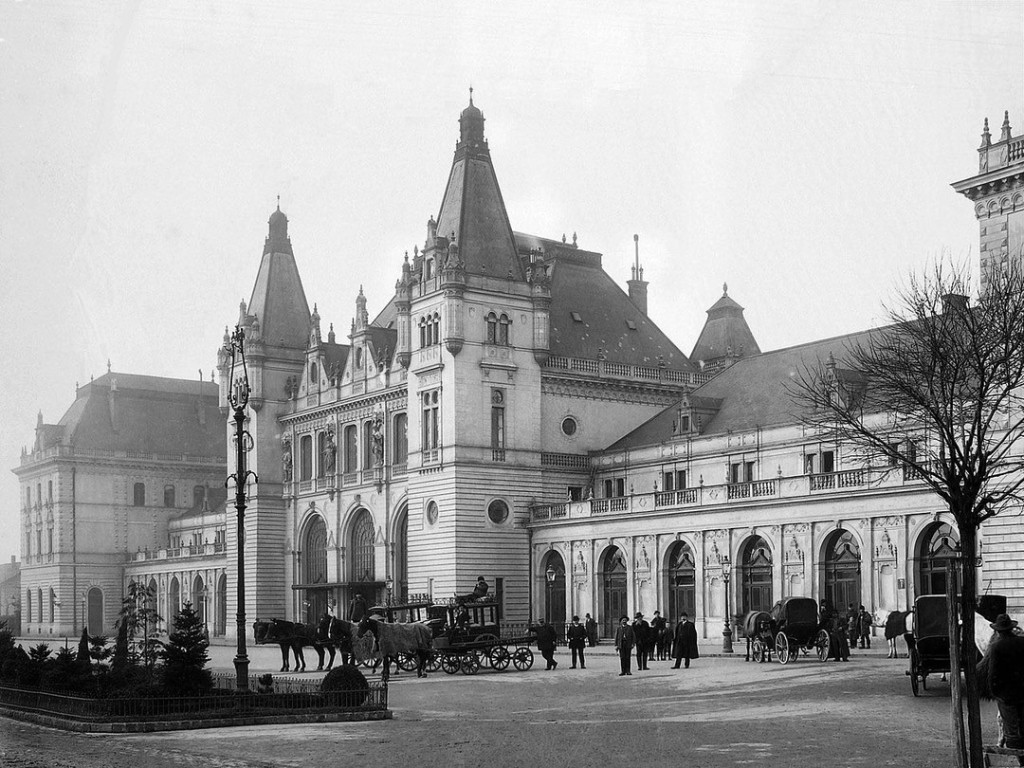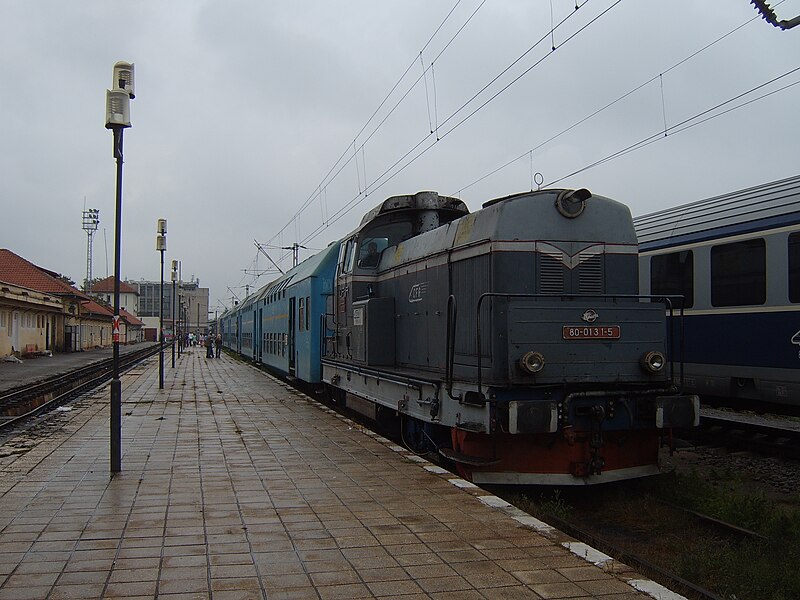I have always feared being late and I just discovered that I am eighty years too late. One of the best things about a train journey to Timisoara should be arriving at Temesvar-Jozsefvaros (Timisoara-Iosefin). Railway Station That will not be happening anytime soon or ever. The station was destroyed in 1944 during the fighting of World War II. Its replacement can hardly compare. Imagine, a UFO dreamed up by the minions of Romania’s communist dictator, Nicolae Ceausescu. That is Timisoara-Nord Railway Station as it stands today. Nothing could be further from the French Renaissance style palace of transport that greeted arrivals to Timisoara by train for almost fifty years.
The neo-classical edifice opened in 1897 and offered a grand welcome for passengers. They entered and exited the station by walking through triple arched gates bookended by a pair of bastions. When Temesvar-Jozsefvaros was built, the Hungarian administered half (Transleithania) of the Austro-Hungarian Empire was at the pinnacle of its golden age. Judging by the station’s architecture, so was its designer, Felix Speidl. The Kingdom of Hungary had just celebrated the millennial anniversary of the Magyars arrival in the Carpathian Basin. Confidence was sky high. Temesvar-Jozsefvaros’ design reflected this optimism.
If there is one station that I would love to put on my itinerary for the lost cities beyond Hungary’s borders it would be Temesvar-Jozsefvaros. To see the station at the end of my journey from Oradea would be the equivalent of dreaming with my eyes open in broad daylight. My impression of the station is informed by a black and white photo taken in 1907. It shows men in suits and bowler hats, a horse drawn carriage waiting to whisk passengers from the station to their homes or hotels. If I stare at that photo long enough, I can imagine that I am looking back in time at one of those men who might be me. In such moments, I would love to have lived during that time. I am probably not the only one.

Upon arrival – Temesvar-Jozsefvaros (Timisoara-Iosefin) Railway Station in 1907
Living In The Past – A Precarious Existence
There are lots of reasons not to live in the past. Life was precarious with backbreaking work and infectious diseases that resulted in life expectancy being much shorter than it is today. Anytime I imagine living in the past, I always see myself in prosperous circumstances with copious amounts of leisure time available to. This is a dream that would not survive first contact with historical reality. Many years ago, when I was living on the Great Plains in South Dakota, it was not uncommon to talk with people visiting the area for the first time who would express the wish that they could have lived in earlier times on family farms or ranches that dotted the area prior to the Great Depression. Those were supposedly the days when life was simple, people were wholesome, and the land provided them with everything they needed. A colleague of mine heard these kinds of comments and found them delusional. She did not want to live in the pioneering past because life was extremely hard.
People spent most of their time laboring to scratch out a living in circumstances that were difficult even in the best of times. They were in the fields from dawn to dusk. No matter how hard they worked, their livelihoods were at the mercy of the weather which could be extremely brutal. A hailstorm might wipe out a year’s worth of crops in a matter of minutes. I generally agreed with her sentiment. The farms and ranches that had survived in the area were a minority. A majority did not manage to eke out a living and left long ago. Life as it was lived in the past is not to be taken lightly. Misery was never far away. And yet there is a part of me that still sees the past as an ideal. Not on the Great Plains, but in Austria-Hungary. This is true, even if I know better.

Postcard perfect – Temesvar-Jozsefvaros (Timisoara-Iosefin)
Everyday Difficulties – The Sordid Underbelly
The development of an itinerary that would take me to the lost cities arose partly from a fascination, to live in the Austro-Hungarian Empire’s past. Passion and obsession can make people do strange things, like wanting to live in a past that was fraught with everyday difficulties. Earning a living was never easy. Rather than just trying to get by, many people were hoping to survive. I have had to remind myself that the lost cities and the world in which they existed are a cautionary tale. The cities were lost for a couple of reasons. The most obvious was that Hungary ended up on the losing side of a terrible war. The underlying issue was tensions between Hungarians and the many ethnic groups that inhabited the empire. This led to discrimination, violence, and vindictiveness on all sides.
As fascinating as I find Austria-Hungary, the idea of living during that time gives me pause. Most of the individual stories I know about people who lived in the empire were either aristocrats, famous writers and artists, or soldiers. I have not tried hard enough to discover the dirty truth of Austria-Hungary’s history. I do not want to imagine myself living in a ramshackle hut on the puszta. or living in a ghetto while toiling in a factory on the fringes of a fetid city, or farming on a tiny plot of land at the pleasure of a large landowner. Instead, I see myself traveling around the empire, taking the time to admire the architectural embellishments of stations such as Temesvar-Jozsefvaros that were scattered throughout the empire. There are no worries about wealth or war, no realization of class distinctions and the sordid underbelly that plagues all rapidly growing societies.

Pulling into the station – Train at Timisoara Nord Station (Credit: Phil Richards)
Dreams & Delusions – Just My Imagination
In my imagination, the future is bright, and life will only get better. I am living the good life in an empire filled with promise. The Temesvar-Jozsefvaros Railway Station was part of that promise. And then it vanished like a ghost for reasons I do not want to think about. The men in that old photo taken in front of the station led lives that I can barely imagine. They had hopes and dreams, many of which would soon be destroyed by war and treaties. Their reality bears little resemblance to my dream. In essence, my dream is a delusion. I will never arrive at Temesvar-Jozsefvaros for a simple reason. It no longer exists and neither does the world I want to be a part of.
Click here for: Delayed Gratification – Finding The Way To Subotica (The Lost Cities #10)
